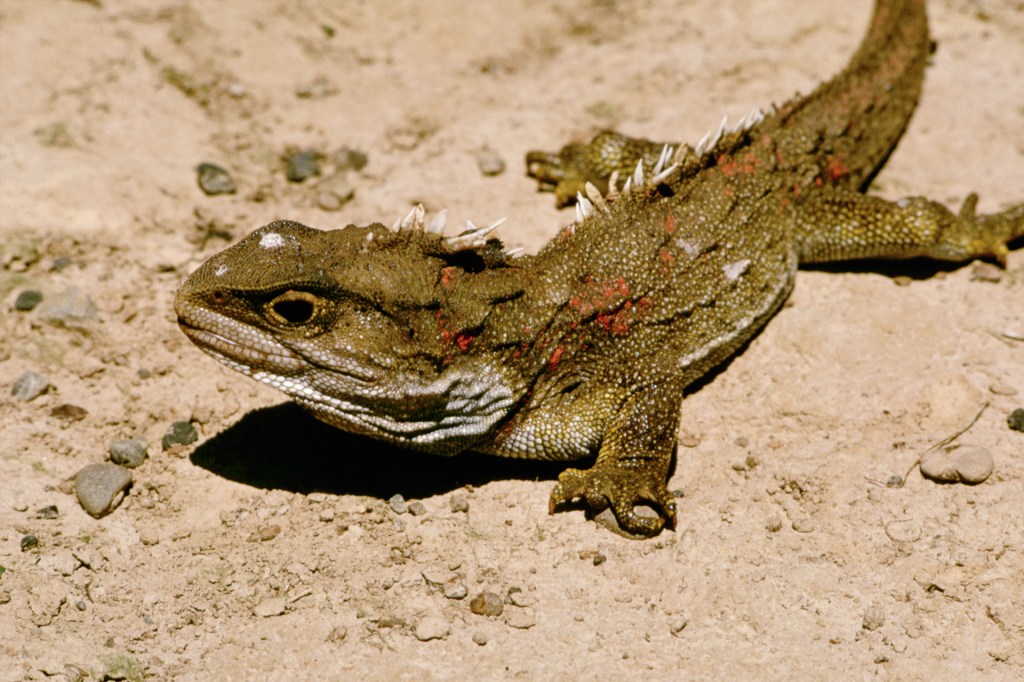Quiet Creatures? Nope.

A new research project finds that 53 species of animals thought to be silent actually make sounds. Dogs bark, frogs croak, and birds chirp. Some animals are known for their sounds. Others seem to be silent. Think about it: Have you ever heard a peep from your pet turtle? But a study published last October in Nature Communications suggests something new about some of these so-called quiet creatures.
Researchers recorded 53 species thought to be silent. The results? “Every single species we recorded made sounds,” Gabriel Jorgewich-Cohen, a coauthor of the paper, told TIME for Kids. The study suggests that these animals, which use vocalizations vocalization a sound uttered by a living thing (noun) Different species of birds use different vocalizations. to communicate, might share an ancient link.
Sound On
“Some animals, they’re really highly vocal, like frogs and birds,” Jorgewich-Cohen says. “By comparison, we tend to consider other animals to be nonvocal, and then we don’t give them as much attention.” Many turtles are considered silent. But Jorgewich-Cohen heard vocalizations from them while doing a different study in the Amazon. (See “Listen In.”)
Maybe the widespread scientific view was wrong, Jorgewich-Cohen thought. The only way to find out was to really listen. “I tried first with my own pets,” he says. One was a turtle named Homer. “I found sounds there. So I decided to keep going and record as many turtles as I could.”
Ultimately, the study included 50 turtle species, a reptile species called the tuatara, the South American lungfish, and the Cayenne caecilian, an amphibian that looks like a worm.

LISTEN TO ME The tuatara was once thought to be silent. Now scientists have recorded its sounds.
JAMES L. AMOS—GETTY IMAGESEach animal was recorded with advanced equipment for at least 24 hours. The creatures were recorded alone and in groups based on age and gender. Jorgewich-Cohen listened to more than a thousand hours of audio to document document to keep track or make a record of something (verb) The teacher documented the class's attendance every day. the sounds.

DO YOU HEAR THAT? Scientists used special equipment to record the South American lungfish.
USER10095428_393/GETTY IMAGES
Common History
The findings indicate that the animals’ ability to vocalize might be linked to a common ancestor from 407 million years ago. Jorgewich-Cohen and the scientists on his team think it might have been a fish that lived when oceans covered more of Earth than they do today. To arrive at this conclusion, scientists combined their data with research done by others in the past.
More information is needed to test this conclusion. Jorgewich-Cohen encourages this. “There is a tendency for people to learn something like, for example, turtles are nonvocal, and then they just keep this as being a reality,” he says. “It’s good to keep curious and try different stuff.”
Listen In

Millions of animals live in the Amazon rainforest. Some are noisy. Others, such as turtles, are thought to be silent. But researcher Gabriel Jorgewich-Cohen heard turtle vocalizations in the Amazon. Have Indigenous people known about these vocalizations all along?
Zoologist Irene Ballagh thinks it’s possible. When Ballagh was growing up in New Zealand, her mom told her about tuatara vocalizations. But scientists have long said the tuatara is silent. Those researchers, she told Scientific American, “were not ever thinking to ask local people” about what they’d seen and heard. She hopes future research incorporates the knowledge of local and Indigenous people.













